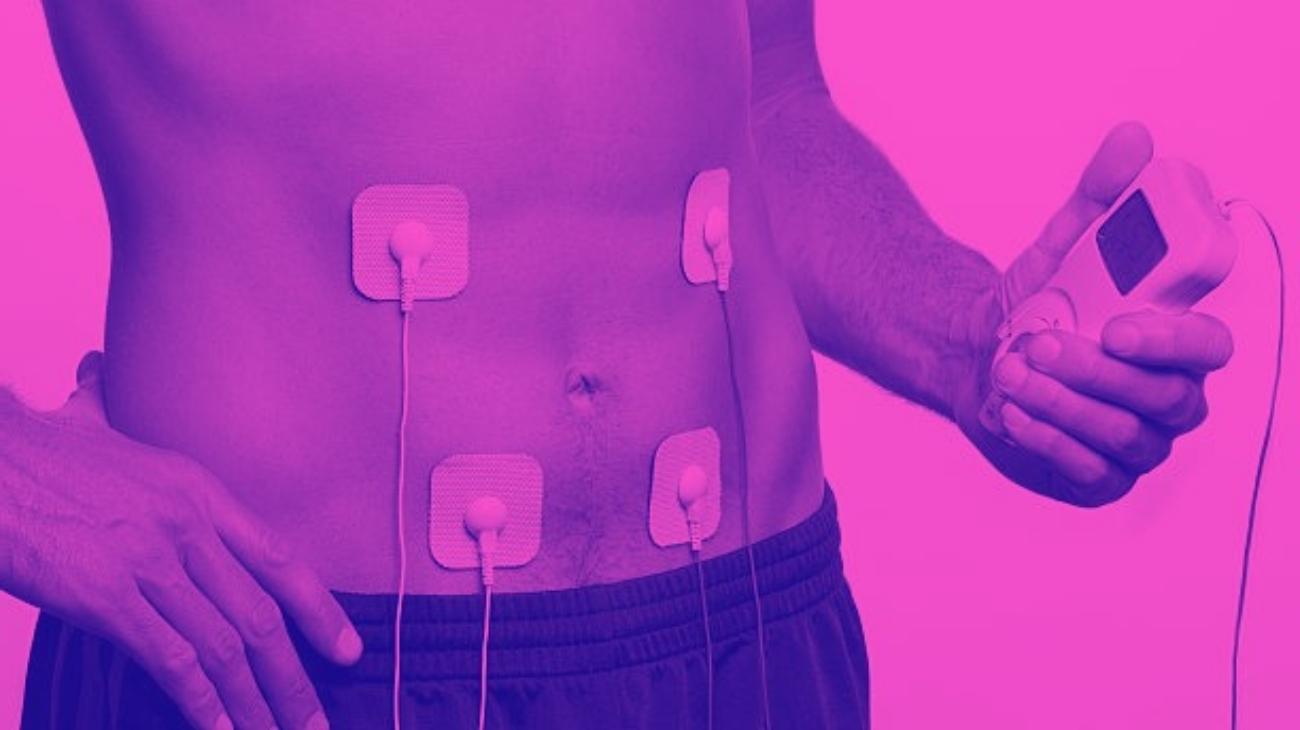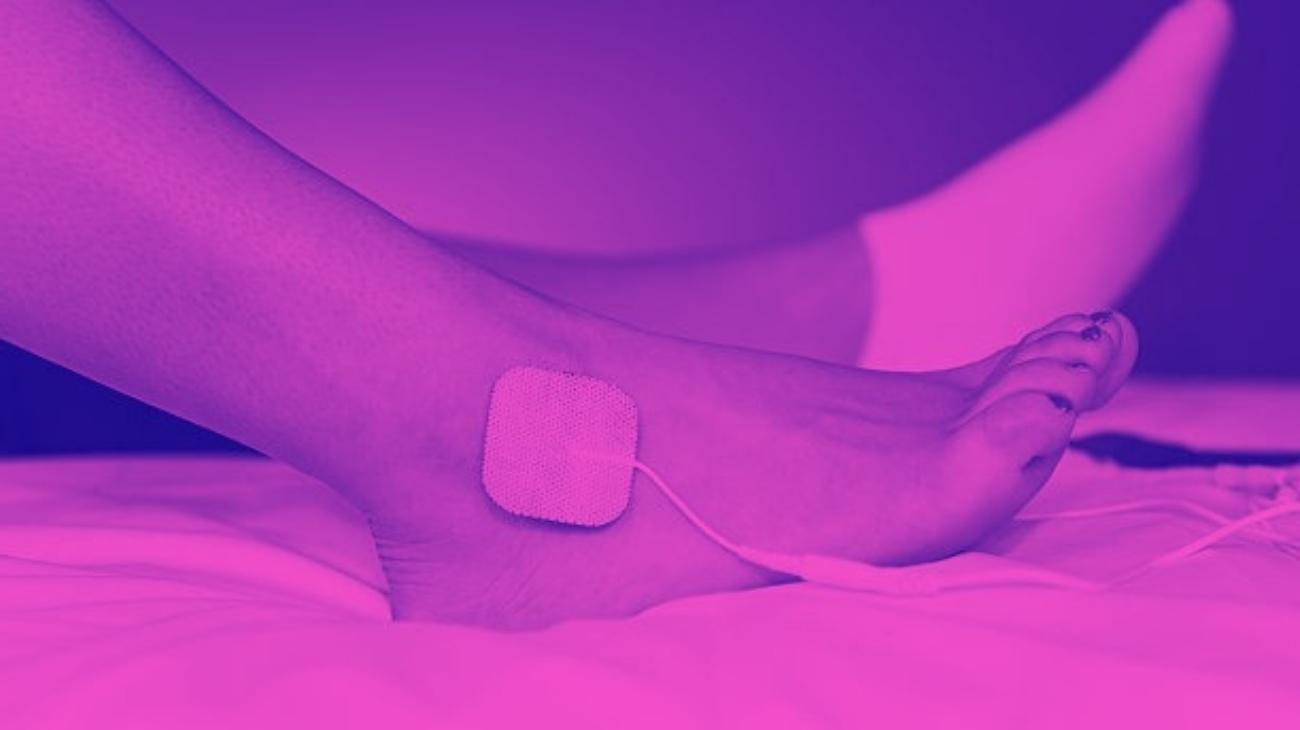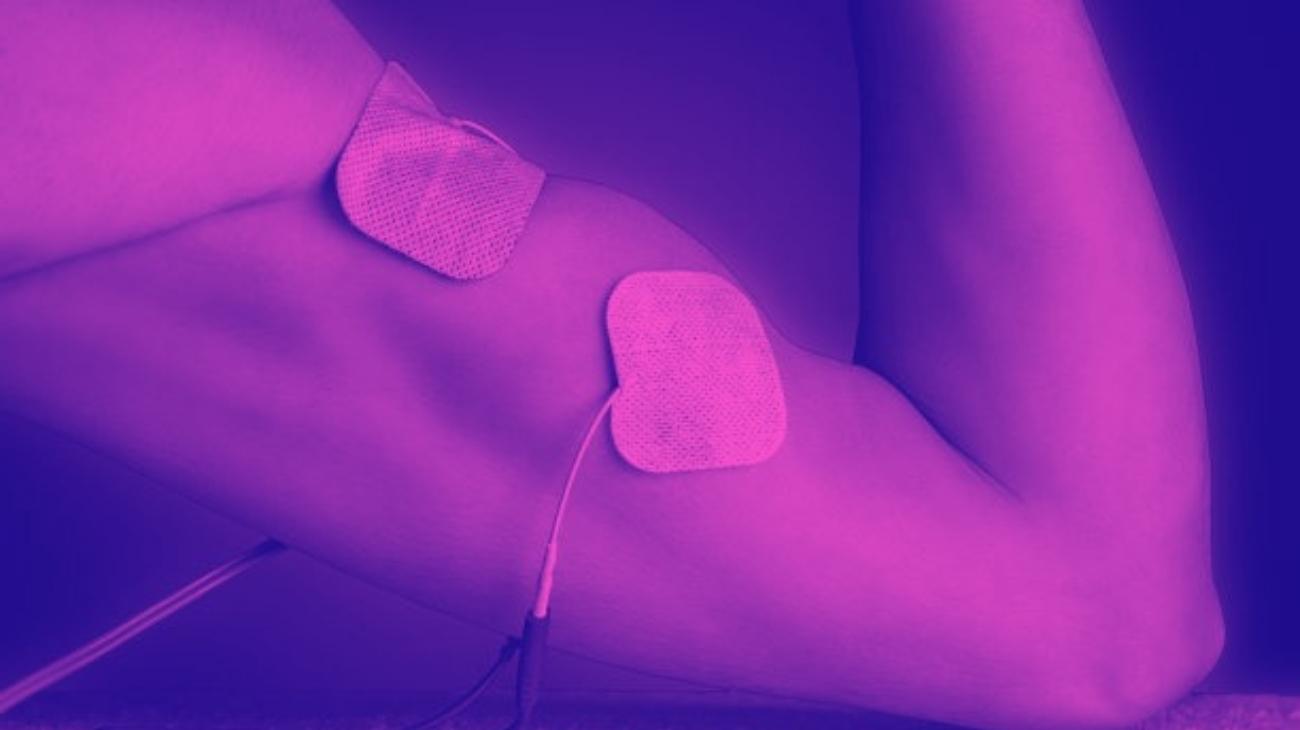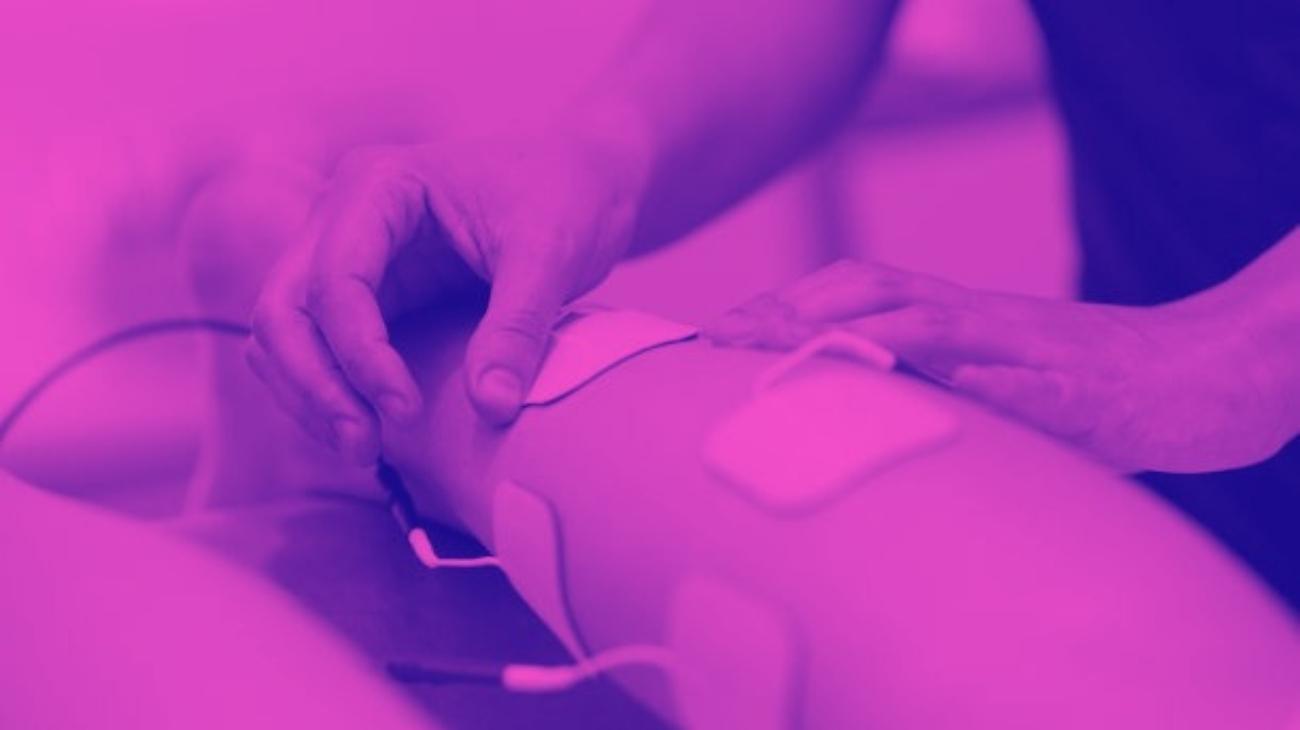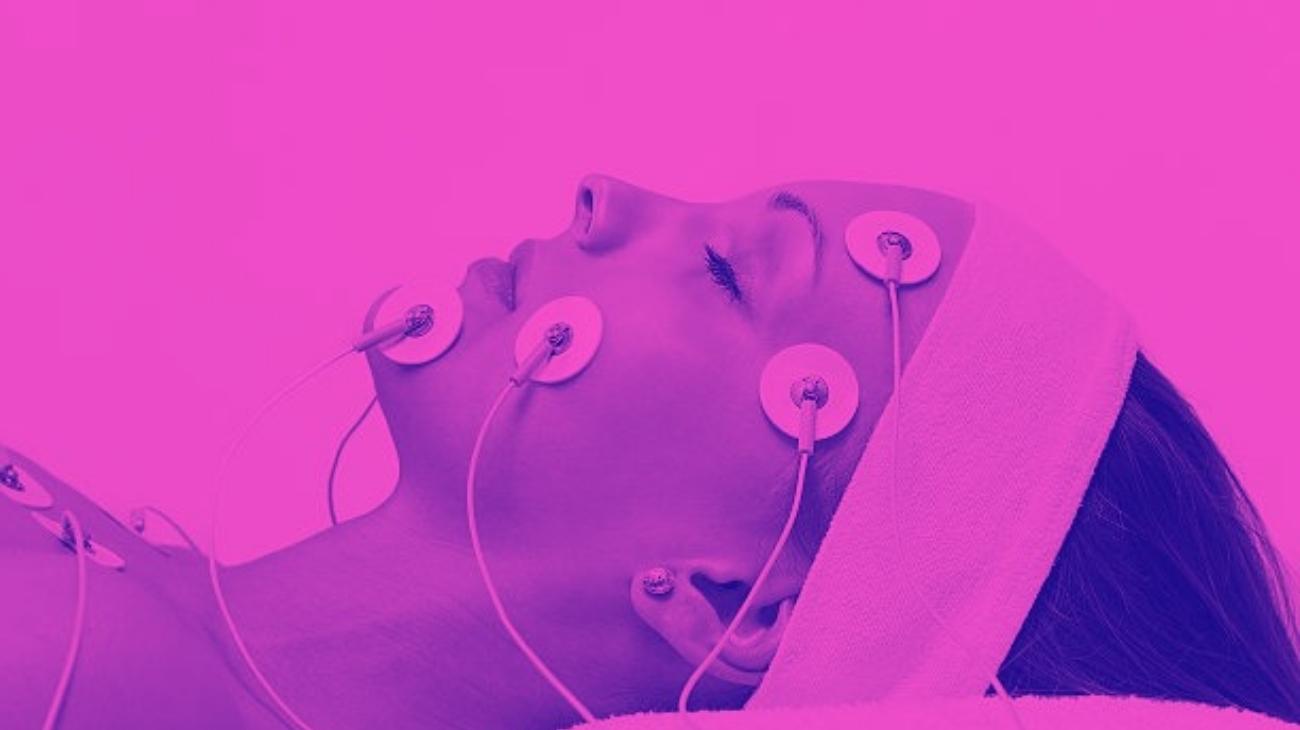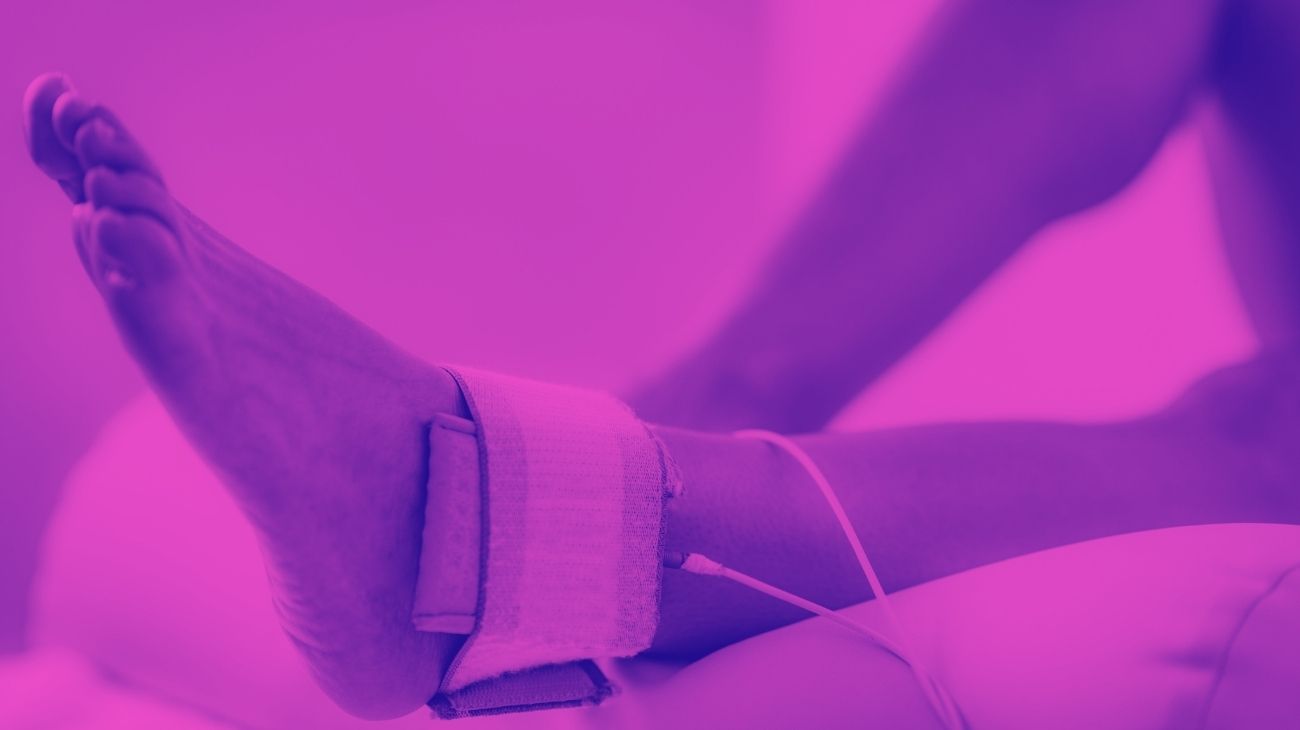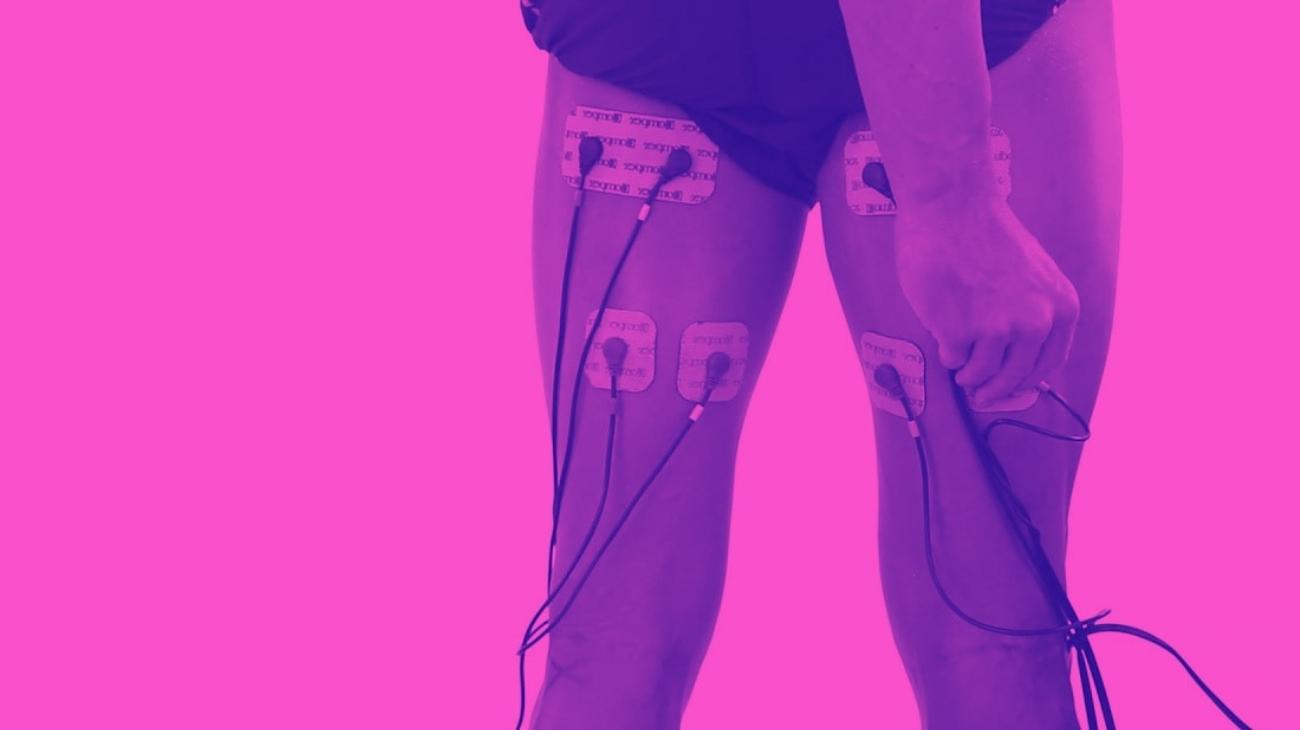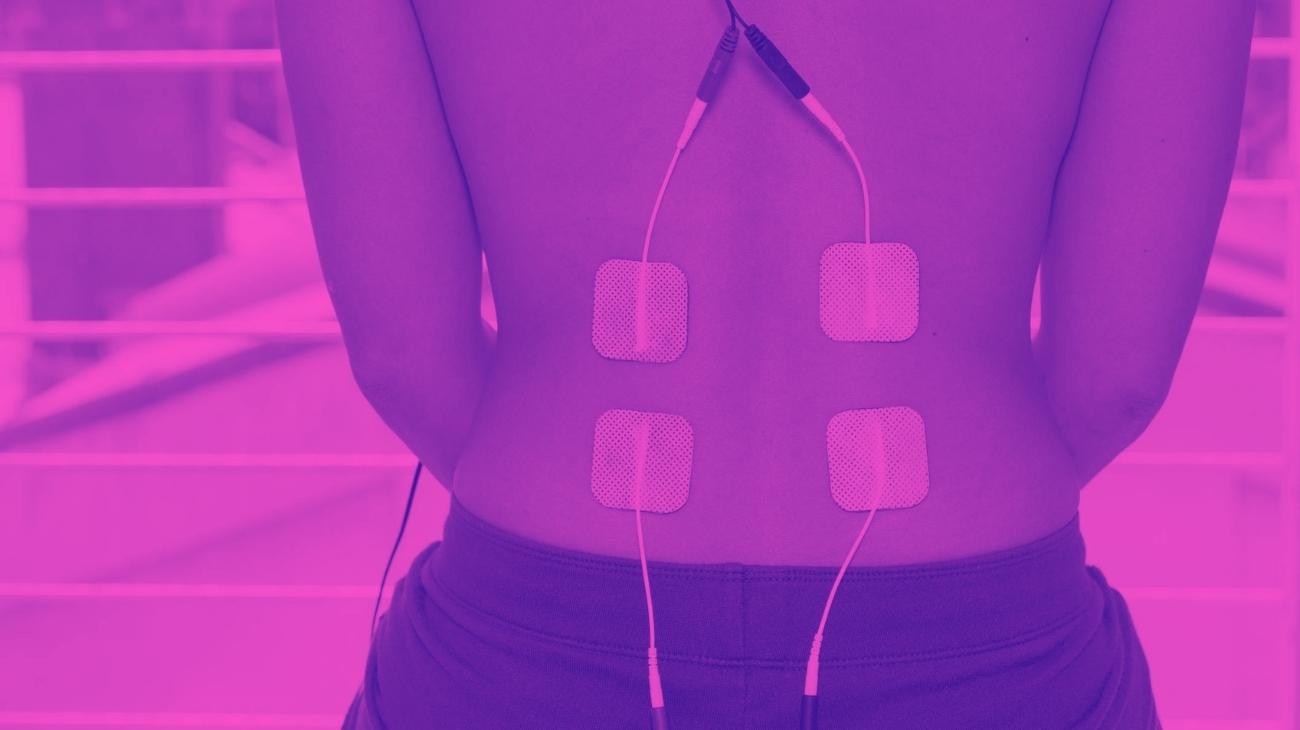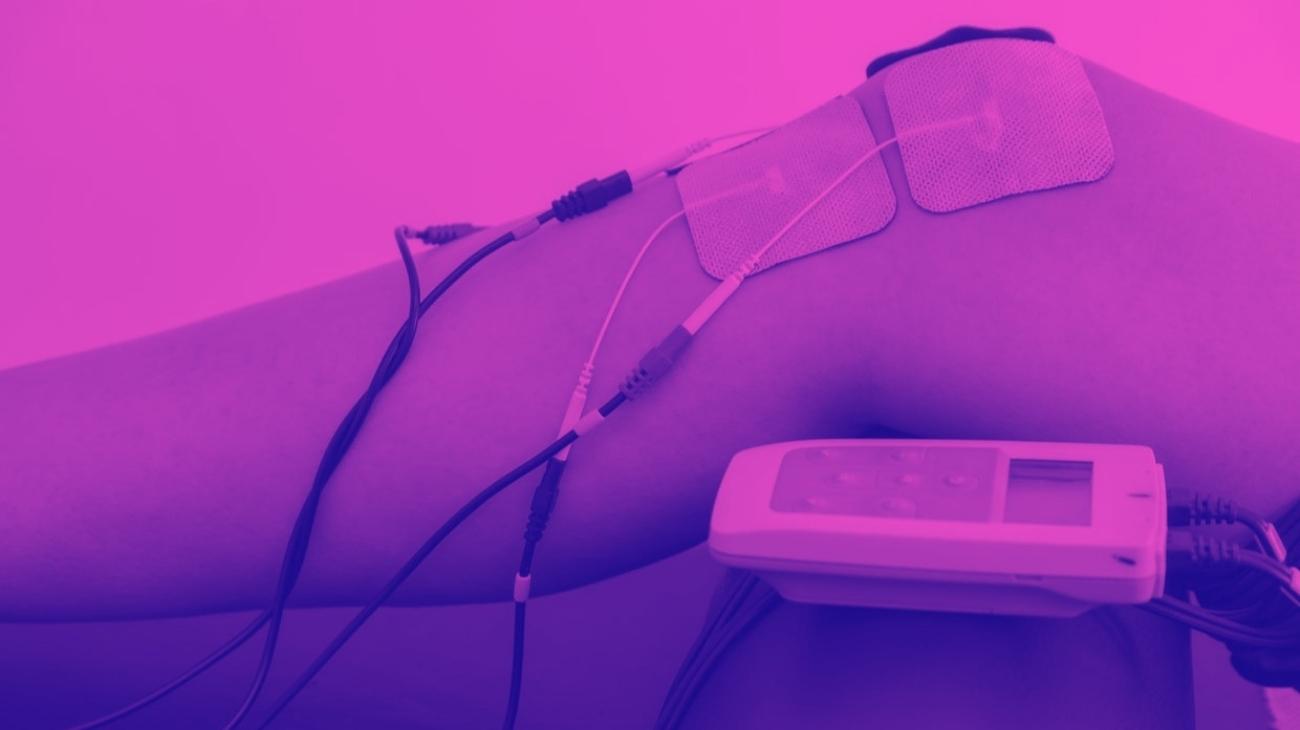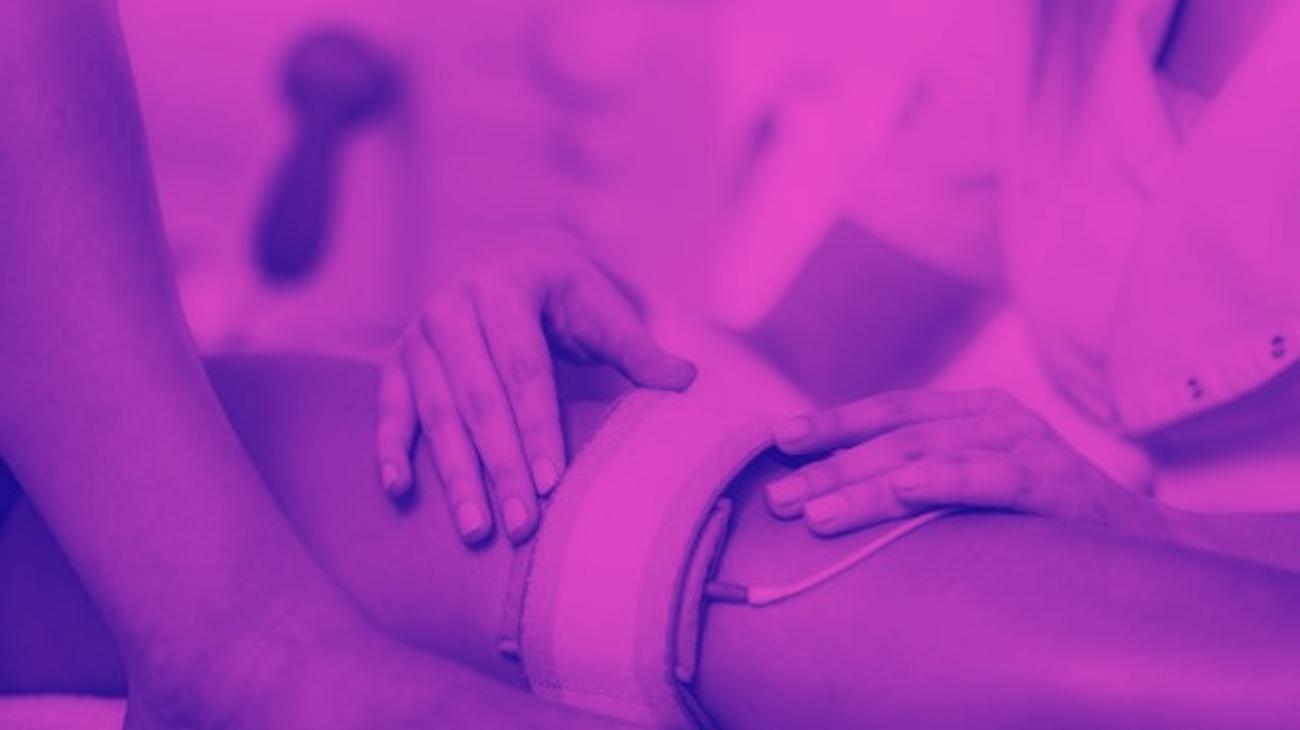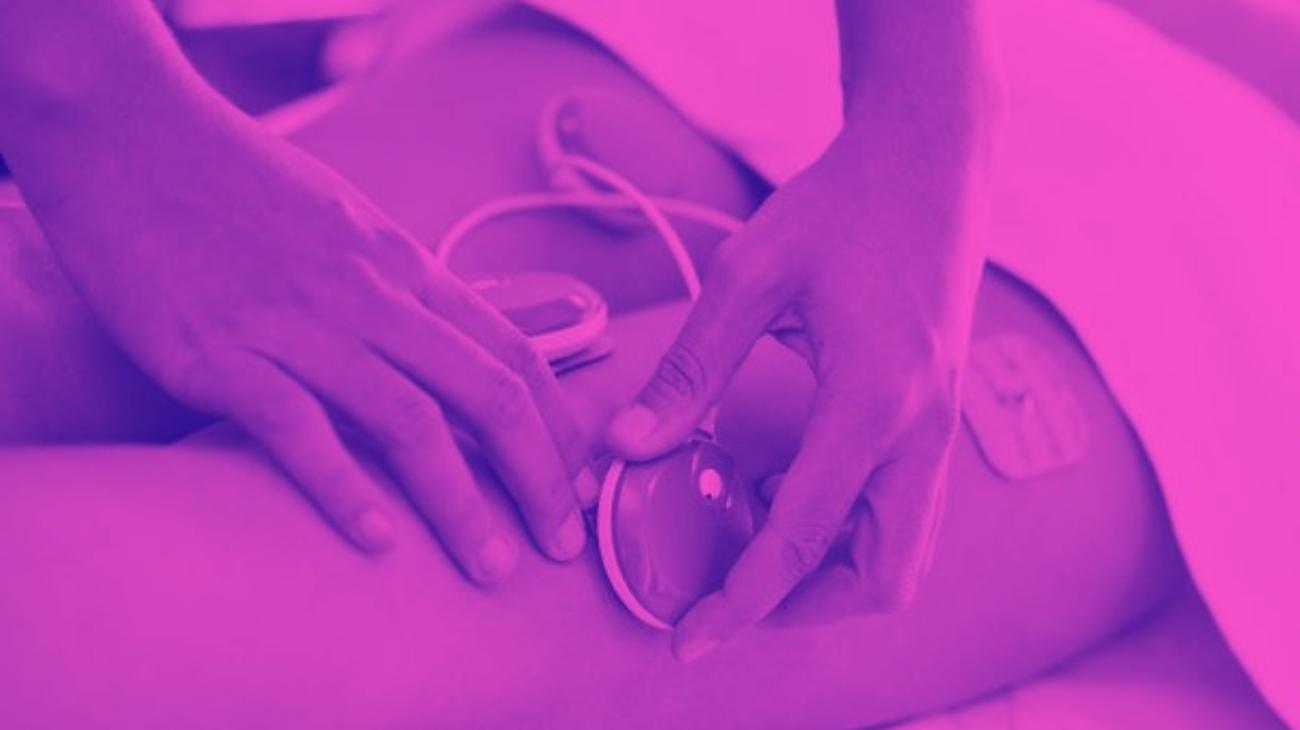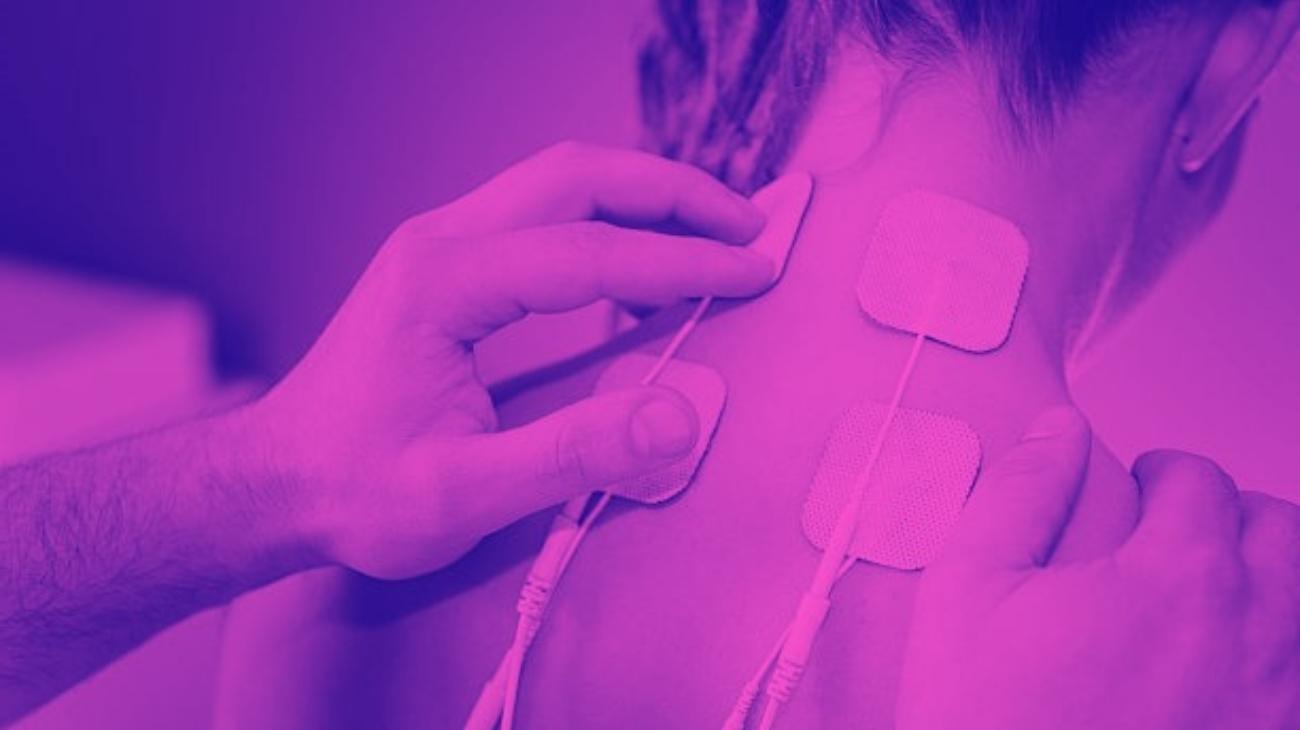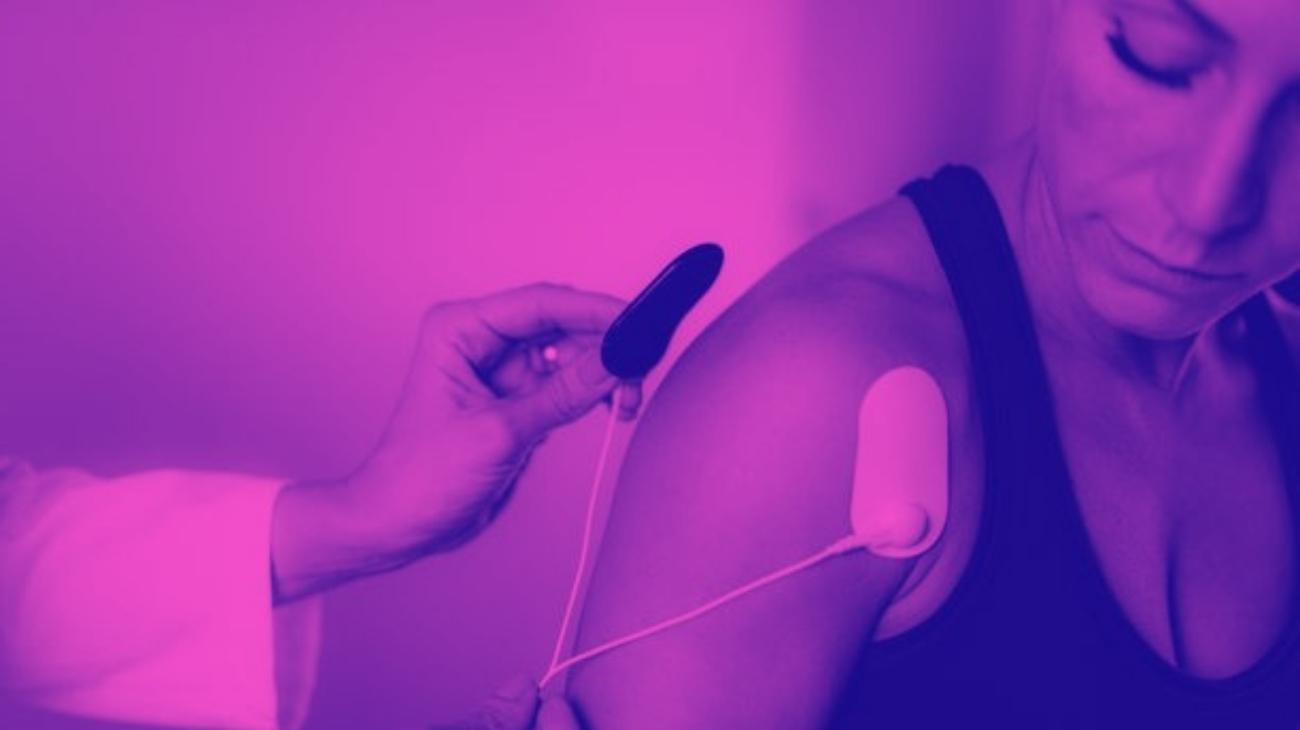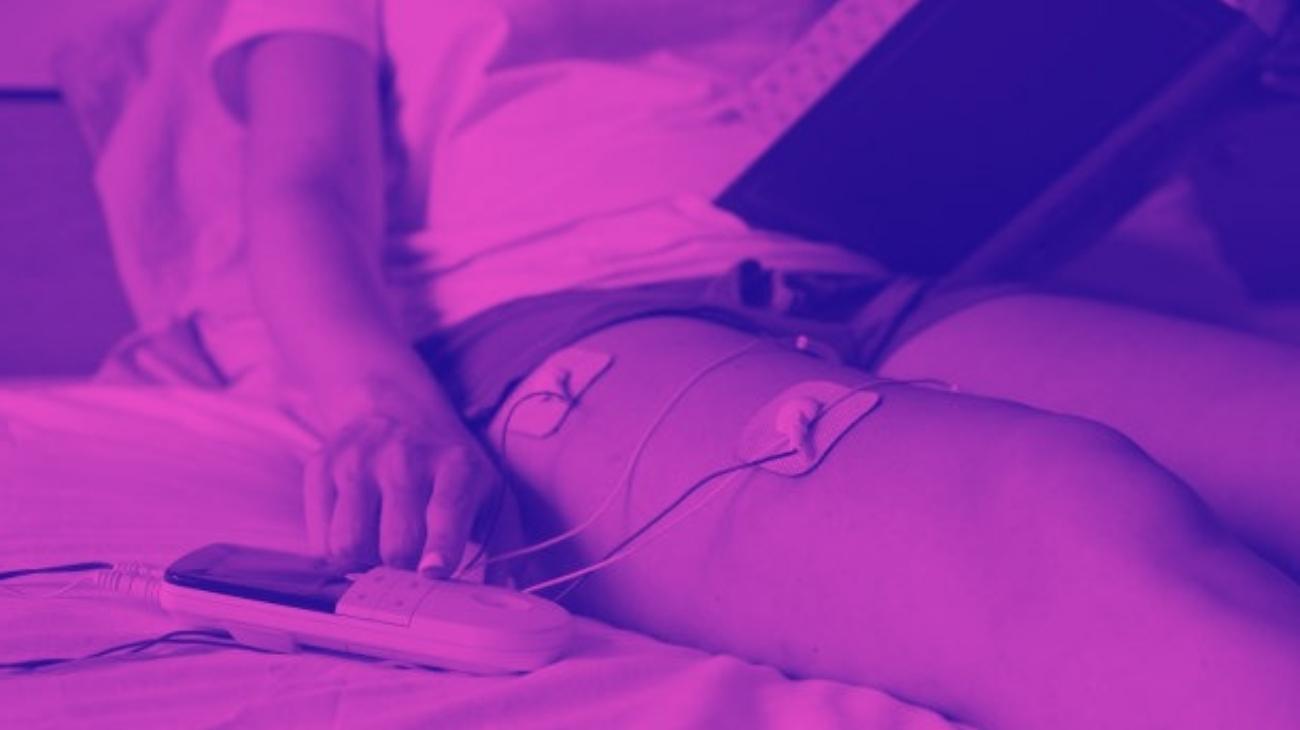- How to use a TENS machine to relieve knee pain?
- Best TENS machines for knee injury recovery
- How to use an EMS muscle electro stimulator for knees?
- Best EMS electrostimulators for strengthening knee muscles and tendons
- Video: How to place electrodes pads on the knee?
- More types of EMS stimulators and TENS machines you should know about
- Most common types of knee injuries
- Differences between TENS and EMS: Which one to use for knee pain?
- Contraindications to the use of electrodes and electrotherapy
Although all joints are of great importance for body mobility, the knee is one of the most important for daily tasks as well as for performance in highly competitive sports. It supports most of the body's weight in a static position and is subject to a great deal of stress most of the time.
For this reason, it is very common for this joint to suffer injuries of different types and levels of severity, which can cause pain. Therefore, in the following paragraphs, we will teach you how to use TENS and EMS electrical stimulation machines for the treatment of knee pain and injuries.
How to use a TENS machine to relieve knee pain?
The electrical discharges produced by TENS units (transcutaneous electrical nerve stimulation) are designed to interact with the nerve endings responsible for the sensation of pain, thus mitigating and generating an analgesic effect in the patient.
This treatment also has a wide variety of benefits, among which we can highlight the following:
- Increase of the pain threshold: the electrical discharges produced by the TENS machines directly affect the nerve endings located in the branches of the vastus and saphenous nerves, through which it connects with the femoral nerve, mitigating the sensation of pain.
- Numbness of the nociceptors: by means of this technique, the groups of nerve endings located around the knee joint are immediately numbed, generating a sensation of instant relief in the patient.
- Improved blood supply: the heat generated by the discharges produced by the EMS machine results in a dilation of the blood vessels surrounding the joint, which produces an analgesic effect in the area that can last for several minutes after the session is over.
- Stimulation of reciprocal innervation: by means of this therapy, a simultaneous relaxation of the internal and external lateral ligaments is produced, generating a considerable relief in the patient.
All these advantages make TENS therapy the ideal option to alleviate ailments caused by injuries or disorders affecting the knee joint, which can range from dislocations to arthritis.
However, despite the versatility of the treatment, it is important to note that TENS is a therapy for treating the symptoms of injuries. That is to say, by means of it you will be able to treat the pain of an injury, but it will never be responsible for its healing. Recovery should be carried out by means approved by a specialist.
Best TENS machines for knee injury recovery
For the treatment of pain in different areas of the body, it is possible to find a large number of TENS units with different configurations, number and size of electrodes, designed to suit the region of the body to be treated, or the ailment in question. Here is a list of some of the best TENS machines for the treatment of knee joint pain:
- Type: TENS
- Channels: Dual
- Modes/Programs: 8 Modes
- Intensity: 25 Levels
- Wireless: Yes
- Heat Therapy: No
- Battery: 3 AAA Batteries
- Electrodes: 4 Pads
- Display: Digital
- Size: 2.14" x 5.5" x 7.08" - 0.33 lbs
- Includes carrying bag
- Improves joint mobility
- Portable and small size
- Reduces pain symptoms
- Good quality
- Few types of programs
- Not suitable for muscle hypertrophy
- Battery operated
It has an interesting session timer function that allows you to adjust the duration of each therapy up to a maximum of 60 minutes. Its compact size allows it to be carried in your pocket, so you can take it with you from home to work, or on the road, and use it whenever you need it.
- Type: TENS
- Channels: Dual
- Modes/Programs: 5 Modes
- Intensity: 10 Levels
- Wireless: Yes
- Heat Therapy: No
- Battery: Rechargeable Battery
- Electrodes: 4 Pads
- Display: Digital
- Size: 8.8" x 2" x 7.8" - 1.15 lbs
- Includes user manual
- Prevents muscle atrophy
- Accelerates recovery from sports injuries
- Includes carrying bag
- Reduces pain symptoms
- Non-universal electrode replacements
- Not suitable for muscle hypertrophy
- Few types of programs
The TENS 7000 muscle stimulator includes one of the most complete electrical stimulation therapy packages you will find. It includes 1 TENS 7000 unit, 2 guide cables, 4 packs of reusable pads, 1 9-volt battery, 1 instruction manual and a hard case to carry your electrostimulation equipment wherever you want.
- Type: Combo
- Channels: Dual
- Modes/Programs: 16 Modes
- Intensity: 20 Levels
- Wireless: Yes
- Heat Therapy: No
- Battery: Rechargeable Lithium (up to 30 hours)
- Electrodes: 12 Pads
- Display: Digital
- Size: Not specified
- Good quality
- TENS+EMS Combo
- Accelerates recovery from sports injuries
- Long battery life (up to 30 hours)
- Includes carrying bag
- No heat therapy
- No touch screen included
- Does not specify measurements and weight
What distinguishes this electrostimulator from others on the market is its lightweight design with black and gold finishes, its high quality materials and the inclusion of a dust-proof leather bag with which you can take it wherever you want safely. The compact size in which you can find this device will allow you to take it with you and use it wherever you like very easily, as it is incredibly discreet.
- Type: TENS
- Channels: 2
- Modes/Programs: 6 Programs
- Intensity: Not specified
- Wireless: No
- Heat Therapy: No
- Battery: Rechargeable Lithium (up to 20 hours)
- Electrodes: 8 electrodes
- Display: Digital
- Size: Not specified
- Includes user manual
- Accelerates recovery from sports injuries
- Portable and small size
- Long battery life (up to 20 hours)
- Includes carrying bag
- No intensity levels specified
- No heat therapy
- Does not specify dimensions and weight
It has 6 modes of use that emulate different types of massages to achieve different objectives, along with 10 levels of intensity that provides greater effectiveness. The package includes 1 control, 2 large electrodes, 2 small electrodes, 2 guide cables, 1 user's manual, 1 cable case and 1 treatment guide.
- Type: TENS
- Channels: 4
- Modes: 24 Programs
- Intensity: Not specified
- Wireless: No
- Heat therapy: No
- Battery: Rechargeable
- Electrodes: 8 Pads
- Display: LCD
- Size: Not specified
- 4 independent channels
- Provides cramp relief
- Portable Device
- Promotes tissue healing
- 24 programs
- Few electrodes
- Does not specify battery life
- Does not specify intensity and size
It has 24 clinically proven massage programs, which are divided into 12 TENS therapy programs and 12 muscle stimulation training modes. It has a long-life rechargeable lithium battery that will give you a great autonomy of several hours of continuous use, eliminating the extra cost of buying replacement cylindrical batteries.
How to use an EMS muscle electro stimulator for knees?
Knees are mostly made up of bones, tendons, ligaments and cartilage, so the effectiveness of EMS therapy on this will be very limited, as it is aimed at conditioning muscle tissue, plus the contractions can interfere with knee recovery in the case of certain injuries.
However, it is possible to take advantage of the benefits of EMS devices on the muscles adjacent to the knee, such as the hamstrings and gastrocnemius muscles.
Through this method, a wide variety of benefits can be realized, as described below:
- Increased joint stability: the electrical impulses generate contractions that increase the strength and resistance of the vastus medialis, vastus lateralis, soleus and tibialis anterior muscles responsible for stabilizing knee movement.
- Decreased risk of injury: as a result of the strengthening of the muscles, the resistance and elasticity of the knee increases, reducing the possibility of injury due to the increased stability provided by the muscles.
- Increased mobility: the strengthening and increased elasticity of the semimembranosus, biceps femoris and gastrocnemius muscles provide an increase in the range of motion of the joint.
- Shorter recovery time: EMS therapy is intended for muscle stimulation, which promotes the speed of recovery of muscle fibers, reducing recovery time from injuries such as tears or strains.
Best EMS electrostimulators for strengthening knee muscles and tendons
The use of muscle electrostimulation devices for knee mobility is one of the best ways for injury prevention and joint strengthening. For this, you need to use the right EMS machines, some of which are listed below:
- Type: Combo
- Channels: 4
- Modes/Programs: 4 Programs
- Intensity: Not specified
- Wireless: No
- Heat Therapy: No
- Battery: Rechargeable
- Electrodes: 12 electrodes
- Display: Digital
- Size: 5.38" x 3.75" x 1"
- Improves blood circulation
- Prevents muscle atrophy
- Rechargeable battery
- Good quality
- Reduces pain symptoms
- Does not specify intensity levels
- Few types of programs
- No weight specified
The package includes 12 clip-type electrodes, 4 guide wires, built-in battery and a dust-proof bag so you can take your electrostimulation device with you wherever you go. Its training modes will allow you to increase your endurance and explosive strength, while the recovery modes will allow you to expel lactic acid and reduce aches and pains caused by post-workout exhaustion.
- Type: Combo
- Channels: Dual
- Modes/Programs: 14 Modes
- Intensity: 25 Levels
- Wireless: Yes
- Heat Therapy: No
- Battery: Rechargeable Lithium
- Electrodes: 6 Pads
- Display: Digital
- Size: Not specified
- Portable and small size
- Includes carrying bag
- Rechargeable battery
- Includes user manual
- Accelerates recovery from sports injuries
- Does not specify measurements and weight
- Battery life not specified
- Does not include touch screen
The compact size of the device makes it incredibly practical and easy to carry, so you can use it anywhere you like quickly and discreetly. It is FDA approved, so it is completely safe to use, and its LCD screen gives you a full display of all settings so you can easily adjust your requirements.
- Type: Combo
- Channels: Dual
- Modes/Programs: 24 Modes
- Intensity: Not specified
- Wireless: Yes
- Heat Therapy: No
- Battery: Rechargeable Lithium (up to 20 hours)
- Electrodes: 8 Pads
- Display: Touch
- Size: Not specified
- Includes user manual
- Long battery life (up to 20 hours)
- Portable and small size
- TENS+EMS Combo
- Reduces pain symptoms
- Does not specify intensity levels
- Does not specify measurements and weight
- Does not include carrying bag
It includes 24 massage programs in total, which are designed to treat a wide variety of ailments. Each of the modes has 4 different options to choose from, and comes with all the accessories you may need, from electrodes and guide wires to a user guide and an electrode positioning guide.
- Type: Combo
- Channels: Dual
- Modes/Programs: 24 Modes
- Intensity: 20 Levels
- Wireless: Yes
- Heat Therapy: No
- Battery: Rechargeable Lithium (up to 20 hours)
- Electrodes: 10 Pads
- Display: Digital
- Size: Not specified
- Portable and small size
- Reduces pain symptoms
- Prevents muscle atrophy
- Improves joint mobility
- Rechargeable battery
- Does not specify measurements and weight
- No heat therapy
- No touch screen included
Among its best features is its dual channel function, through which you can program any of its 24 modes of use in each of the channels individually, allowing you to apply them in different parts of the body with different intensities. Additionally, its built-in lithium battery provides an incredible autonomy, allowing up to 20 continuous hours of use.
- Type: Combo
- Channels: -
- Modes/Programs: 15 Programs
- Intensity: Not specified
- Wireless: Yes
- Heat Therapy: No
- Battery: Rechargeable Lithium
- Electrodes: 2 Pads
- Display: No display
- Size: Not specified
- TENS+EMS Combo
- Control from the mobile app
- Rechargeable battery
- Includes user manual
- Reduces pain symptoms
- Does not specify battery life
- Does not specify intensity levels
- Does not specify measurements and weight
Unlike most wireless devices, the PowerDot is not controlled by a remote control, but by a versatile mobile application that allows you to navigate and run its 400+ customised programmes quickly and easily, and its compact, discreet and stylish design allows you to carry it with you at all times and wear it under your clothes whenever you want.
Video: How to place electrodes pads on the knee?
Electrodes for knee
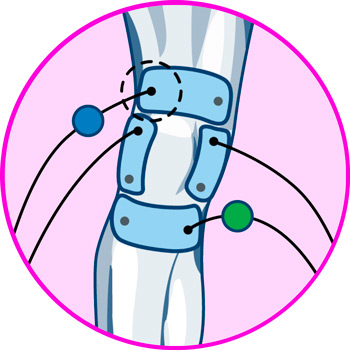
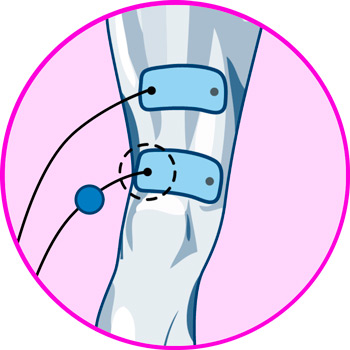

- For sprained knee: A sprained knee can cause damage or pressure on the tibial nerve, in which case, the first electrode should be positioned on the tibial nerve, while the second electrode will be placed on the anterior branch of the obturator nerve, which covers the inner lateral aspect of the knee.
- For osteoarthritis of the knee: For osteoarthritis, the most appropriate areas to position the electrodes vary depending on the area where the pain is centered. If the pain is located in the area over the patella, the electrodes should be positioned on the medial vastus nerve and the lateral femorocutaneous nerve.
- For cruciate ligaments: When the cruciate ligaments are torn, there will be severe pain on the lateral sides of the knee accompanied by swelling.
More types of EMS stimulators and TENS machines you should know about
Most common types of knee injuries
The knee joint is constantly under a great deal of stress, as it continually supports the weight of the body, as well as bearing the brunt of the lifting when lifting heavy objects.
As a result, the knee is a joint that is very vulnerable to a large number of injuries, among which we can highlight:
- Anterior cruciate ligament injury: this injury consists of a tear, rupture or sprain of this ligament, which is part of the tissue that joins the femur to the tibia. It is a very common injury in athletes that is produced by trauma or the impact produced by abrupt changes of direction. Its main symptoms are severe pain, swelling, loss of mobility and a snapping sensation in the knee.
- Meniscus tear: this is the tearing of the cartilage that gives stability to the knee, which is caused by sudden turns or excessive weight lifting, activities generally related to sports. A meniscus tear causes symptoms such as pain, swelling, limited range of motion and instability.
- Fractures: occur when a bone in or near the knee is broken. It can occur in the patella, or the tibia and femur in the areas where they meet the knee. The main cause of this injury is trauma caused by falls or accidents and can cause extreme pain, swelling, inability to move the knee and walking.
- Patellar tendonitis: it is a very common ailment among athletes, which consists of an injury in the patellar tendon, caused by tension or excessive load exerted on the knee, and very common among athletes whose disciplines involve jumping. It is usually accompanied mainly by pain of variable intensity in the joint.
- Knee bursitis: it consists of the inflammation of the bursa, a small sac filled with liquid that cushions the friction points of the knee and reduces the friction in the joint. There are several bursae that can become inflamed and the symptoms depend on which one it is, although in general, the affected part can produce pain when moving, swelling or tenderness, in addition to a sensation of warmth. It occurs as a consequence of frequent pressure on the knee, trauma or overload.
Differences between TENS and EMS: Which one to use for knee pain?
The treatment of the knee by means of electrical stimulation therapies is very effective, however, it is necessary to keep in mind that, although both therapies work with electrical stimuli, they have crucial differences.
Transcutaneous Electrical Nerve Stimulation (TENS) therapy is a type of physical therapy aimed at treating pain caused by injury, disease and trauma. To treat knee pain, electrical currents with an intensity of between 1 Hz and 250 Hz are used, which interact with the nerve endings of the pain receptors located in the vastus medialis, tibial nerve and saphenous nerve, generating a sensation of relief in the joint.
Muscle electrostimulation, or EMS, is a physical therapy method for the recovery of muscle mass after a period of inactivity or an alternative training method to increase the size and elasticity of the muscles. These machine use electrical currents of between 70 and 150 Hz which, when applied to the muscles surrounding the knee, generate a rapid cycle of muscle contraction and relaxation, leading to improved stability and a reduction in the likelihood of future injury.
With this in mind, it is clear that the ideal method for dealing with knee pain is transcutaneous electrical nerve stimulation TENS, since it is focused on treating pain through interaction with nociceptors located in the nerve branches of the knee joint, increasing pain resistance, mitigating pain sensation and providing relief of varying duration to the patient.
In contrast, EMS therapy is not a viable option for the treatment of knee pain, specifically due to the fact that its primary function is not pain treatment, but physical conditioning, so its use on the knee joint would be of little use at best, due to the lack of muscle tissue in this area. In the worst case, the contractions provoked by EMS devices can produce complications and increase the sensation of pain.











